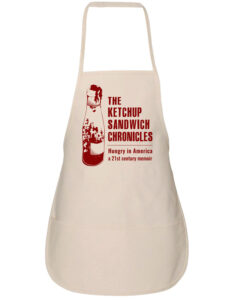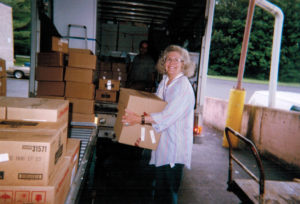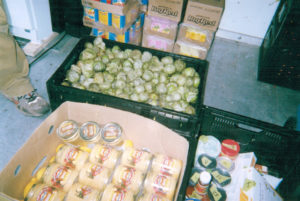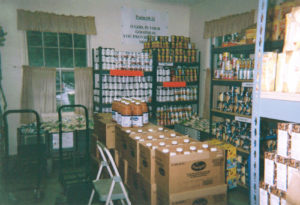5 Easy Steps to Your Successful Food Drive


It’s easier than you think.
Step 1:
Choose the food pantry, homeless shelter, school, church, food bank, or soup kitchen to receive the food you collect.
Step 2:
Contact your recipient, and learn what items the hungry people need. Try to be specific. Can they only accept canned food items or can they use frozen and fresh foods? What about pet food?
If they need pet food or food for homeless people, for example, request those items (with specific food item suggestions) at your drive.
Step 3:
Decide how you want to collect the donated food.
The method I prefer is, of course, the one that worked for me several times. I recommend this method:
Gather some large empty grocery bags in good condition.
Attach a letter to each one saying something like:
Dear Neighbor:
“We are having a food drive in this neighborhood. Please fill this bag with food and set it out on your entryway on ………………………….. when it will be picked up between 00:00 and 00:00. Include am and pm to be more specific.
We need the following kinds of food:……………………..
Your donated food will be donated to ……………………………… Thank you for your generosity. If you have any questions, please call…………………………………. Signed…………………………………….”
Set the bags out at every address in the area you selected.
On the appointed date, return to the addresses and pick up the bags of food.
Step 4:
Deliver them to the selected food pantry, homeless shelter, school.
Step 5:
Pat yourself on your back. You did a great job!
My experience with this food drive method is that people respond positively because you give them bags, tell them exactly what food items you need, and return to pick up the food at a specific time on an exact date.
Thank you in advance for all you are doing to feed your neighbors.
Please post this article on your favorite social media network.
Share it with your friends.
Have a wonderful day!
Thurman Greco
www.hungerisnotadisease.com



Miracles – Because Hunger is Not a Disease

Miracles happened in the food pantry. It took me a while to realize this and then it took another while to accept that such a thing could happen in the basement of a small town church in Upstate New York.
I sneaked miracle stories in on the blog posts. I sneaked them on the pages of “I Don’t Hang Out in Churches Anymore”. Finally, I gave them their own pages – as much as I had the nerve for anyway, in a short book “Miracles”.
Research on miracles taught me some things.
I learned that miracles often include weeping statues, broken legs healing straight, relics, stigmata, and visions. The pantry miracles included none of those things.
Our miracles never really cured anyone. I never saw a statue weep, and no one came down with stigmata.
Instead, they showed us all how to grow and love and forgive. It was giving away the food that was the tip off for me.
As far as I can tell, the food pantry miracles were not the result of prayer.
God just showed up and brought food. Once he came disguised as a fireman. Each miracle was a complete surprise, a unique and different event. God came when the pantry shelves were bare and the lines were long.
I don’t think the miracles proved that any of the shoppers or volunteers were more faithful than anybody else in town. Frankly, I think that some of us saw the miracles as coincidences or something.
However they were seen, these events made an impact on a small number of people who saw them as they happened.
The clincher for me occurred when I finally realized and accepted a few basic things:
Carloads of food never showed up when we didn’t need it.
Boots never appeared on the shelves disguised as toothpaste in the summertime.
Nobody ever brought a handful of nails to fix the barn when the wall wasn’t falling.
Two books appeared on my desk out of the ethers: “Miracles” by Tim Stafford and “Looking for a Miracle” by Joe Nickell gave a feeling of legitimacy to my thoughts and memories.
Because of Tim Stafford, I wrote my book entitled “Miracles”. He was direct about a few things – one of them being that people should not spread “miracle gossip”. Because of his feelings about what he called “miracle gossip”, I’m compelled to relate the pantry miracle stories.
To sneak them in blog posts does not do them justice.
Thank you for reading this blog post. Please refer it to your favorite social media network.


Thurman Greco




